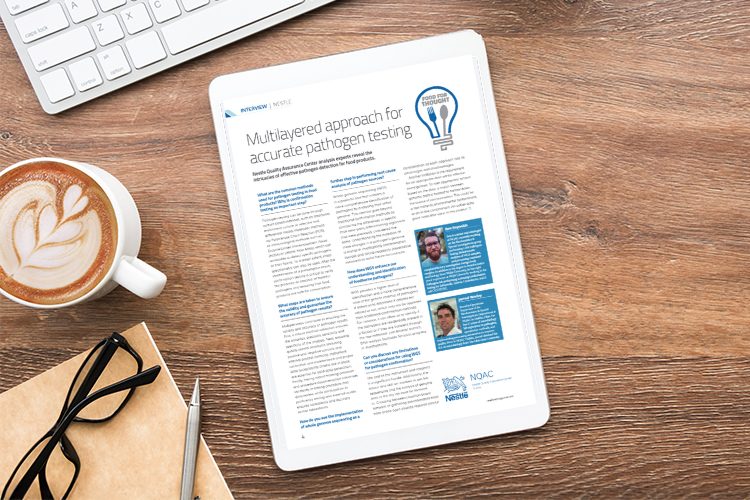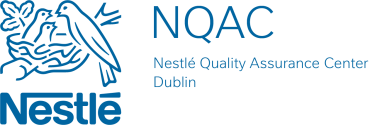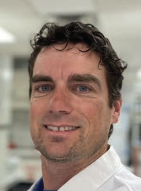Multilayered approach for accurate pathogen testing
- Like
- Digg
- Del
- Tumblr
- VKontakte
- Buffer
- Love This
- Odnoklassniki
- Meneame
- Blogger
- Amazon
- Yahoo Mail
- Gmail
- AOL
- Newsvine
- HackerNews
- Evernote
- MySpace
- Mail.ru
- Viadeo
- Line
- Comments
- Yummly
- SMS
- Viber
- Telegram
- Subscribe
- Skype
- Facebook Messenger
- Kakao
- LiveJournal
- Yammer
- Edgar
- Fintel
- Mix
- Instapaper
- Copy Link
Posted: 5 December 2024 | Ben Reynolds, Jarrod Worley | No comments yet
Nestle Quality Assurance Center analysis experts reveal the intricacies of effective pathogen detection for food products.


What are the common methods used for pathogen testing in food products? Why is confirmation testing an important step?
Pathogen testing can be done through culture-based methods, such as traditional enrichment culture or selective and differential media, molecular methods via Polymerase Chain Reaction (PCR), or immunological methods such as Enzyme-Linked Immunosorbent Assay (ELISA) or Lateral Flow Assay, which use antibodies to detect specific pathogens or their toxins. To a lesser extent, mass spectrometry can also be used. After the identification of a presumptive result, confirmation testing is critical to verify the presence or absence of harmful pathogens and ensuring that food products are safe for consumption.
What steps are taken to ensure the validity and guarantee the accuracy of pathogen results?
Multiple steps contribute to ensuring the validity and accuracy of pathogen results. First, a robust method validation ensures the accuracy, precision, sensitivity and specificity of the analysis. Next, ensuring quality control measures (including positive and negative controls and internal process controls), instrument calibration and maintenance and proper data acceptability criteria are in place are essential for solid data generation. Finally, having robust training protocols and procedure documentation minimises variability in testing procedure and data review, while participation in proficiency testing and external audits ensures consistency and accuracy across laboratories.
How do you see the implementation of whole genome sequencing as a further step in performing root cause analysis of pathogen sources?
Whole genome sequencing (WGS) is a powerful tool that enables a more comprehensive identification of pathogens by analysing their entire genome. This method goes beyond traditional confirmation methods by comparing the differences in specific DNA base pairs, differentiating organisms that were previously considered the same. Understanding the evolution of these changes in a pathogen’s genome is crucial in investigating contamination sources and taking necessary preventative measures to avoid future occurrences.
How does WGS enhance our understanding and identification of foodborne pathogens?
WGS provides a higher level of identification and a more comprehensive view of the genetic makeup of pathogens. It allows us to determine if isolates are related or not, which may not be apparent from traditional confirmation methods. For instance, it can allow us to identify if the pathogens are residentially present in a factory or if they are transient through the raw materials. Like forensic science, DNA analysis facilitates fantastic progress in investigations.
Can you discuss any limitations or considerations for using WGS for pathogen confirmation?
The cost of the instrument and reagents is a significant hurdle. Additionally, the labour and skill set involved in wet lab sequencing and the analysis of genome data in the dry lab must be factored in. Choosing between cloud/on-board software or gathering bioinformatics tools from online open sources requires careful consideration as each approach has its advantages and disadvantages. Another limitation is the requirement for an appropriate data set for effective investigations. To take appropriate actions based on the data, a match between genomic data is needed to narrow down the source of contamination. This could be a raw material, environmental contaminant, or an in-line contaminant. An outlier data point holds little value in this context.
This Food for Thought is in association with:


About the authors


Ben is a senior microbiologist at NQAC currently working on the Biochemistry & Special Investigations group performing GMO/allergens testing, bioinformatic analyses of WGS samples, and processing consumer complaint/factory investigation foreign body samples. In addition to his degree in bioinformatics and biology from Walsh University, he has eight years’ experience at NQAC, formerly working in the Pathogens lab performing screening/confirmation testing for Salmonella, Listeria, Cronobacter, and E. coli O157/STEC.


Jarrod is Operations Supervisor of the Biochemistry & Special Investigations Department at NQAC in Dublin, Ohio. He has 13 years of microbiology lab experience in pathogens, quantitative methods, and implementing processing automation to improve quality. Prior to NQAC Dublin, Jarrod obtained his B.S. in microbiology from The Ohio State University.






